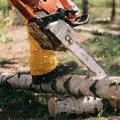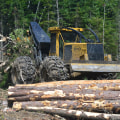Forestry has always been an industry where tradition meets innovation. For centuries, forest management relied heavily on human labor and basic mechanical tools. Today, that landscape is evolving at an unprecedented pace. Smart machines—integrating artificial intelligence, robotics, and precision sensors—are redefining how forests are cultivated, maintained, and protected. These technologies are not only making forestry safer and more efficient but also supporting global sustainability goals by ensuring that forest ecosystems remain resilient for generations to come.
From Axes to Automation
The leap from manual logging to intelligent machinery has transformed the way forest operations function. Modern harvesters equipped with GPS systems and real-time data analytics can assess tree health, optimize cutting patterns, and reduce waste with pinpoint accuracy. Drones survey vast forest areas in minutes, mapping terrain and detecting disease or pest infestations before they spread. This level of precision minimizes unnecessary damage to the surrounding ecosystem and promotes selective harvesting—a crucial practice for maintaining biodiversity. The combination of steel, sensors, and software is not just about productivity; it’s about stewardship.
Sustainability Through Smart Technology
Sustainability lies at the heart of the modern forestry revolution. Smart machines help managers monitor carbon storage, track reforestation progress, and measure long-term ecological changes. Automated replanting systems can now sow seeds at optimal depths and spacing, enhancing survival rates while reducing human labor. Data-driven insights enable foresters to strike a balance between timber production and environmental preservation. In regions committed to sustainable land use, technology allows for continuous feedback loops—ensuring that every tree removed contributes to a healthier, more balanced forest in the future.
Human Expertise Meets Machine Precision
While automation enhances efficiency, human expertise remains irreplaceable. Forestry professionals interpret data, set sustainability goals, and make ethical decisions that machines alone cannot. The partnership between skilled workers and smart equipment leads to safer conditions and higher-quality outcomes. For example, arborists using advanced hydraulic lifts and digital sensors can perform complex maintenance tasks more safely than ever before. The same principle applies at the local level, where services such as tree trimming in Marion, NC demonstrate how modern tools—guided by experienced professionals—maintain urban and rural tree health without compromising safety or environmental standards. Whether managing large timber operations or individual properties, the integration of smart machinery ensures precision, reduces waste, and supports the long-term vitality of the environment.
Economic and Environmental Payoffs
Smart forestry doesn’t just protect the planet—it drives economic growth. Automated systems reduce downtime, cut operational costs, and extend equipment lifespan through predictive maintenance. Meanwhile, sustainable practices attract investors and align with global carbon-neutral initiatives. Governments and private companies alike are investing in these technologies to strengthen rural economies while preserving natural resources. By embracing automation, the forestry sector proves that profitability and sustainability can coexist in harmony.
Looking Ahead: The Forests of the Future
The convergence of steel and sustainability marks the beginning of a new chapter for forest management. As smart machines become more sophisticated, they will not only optimize resource use but also enhance our understanding of ecosystems. Artificial intelligence will predict growth cycles, climate shifts, and wildlife patterns with remarkable accuracy. This integration of technology and ecology ensures that forests remain both productive and protected—a living testament to human ingenuity and environmental responsibility.
Conclusion: A Smarter Path to Conservation
The future of forestry lies in intelligent collaboration between humans, machines, and nature. Smart technology is turning heavy machinery into precision tools of conservation, ensuring that forests remain strong, diverse, and sustainable. What was once an industry defined by brute force is now one driven by data, ethics, and environmental consciousness. In this new era, the sound of steel no longer signifies destruction—it symbolizes innovation working in harmony with the natural world.







